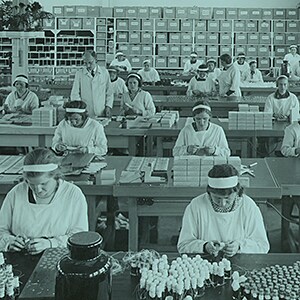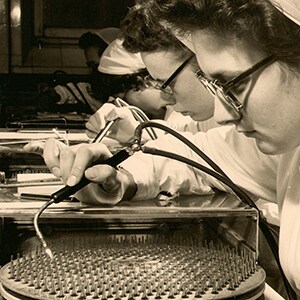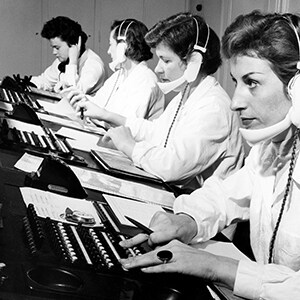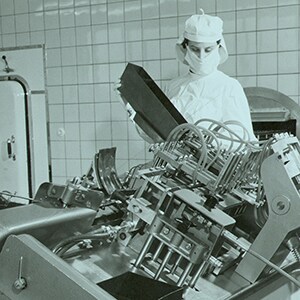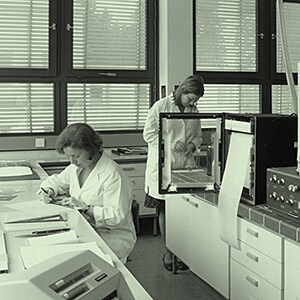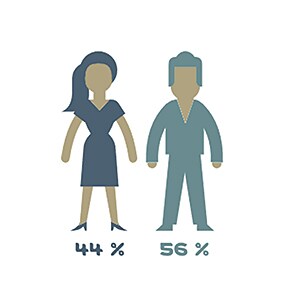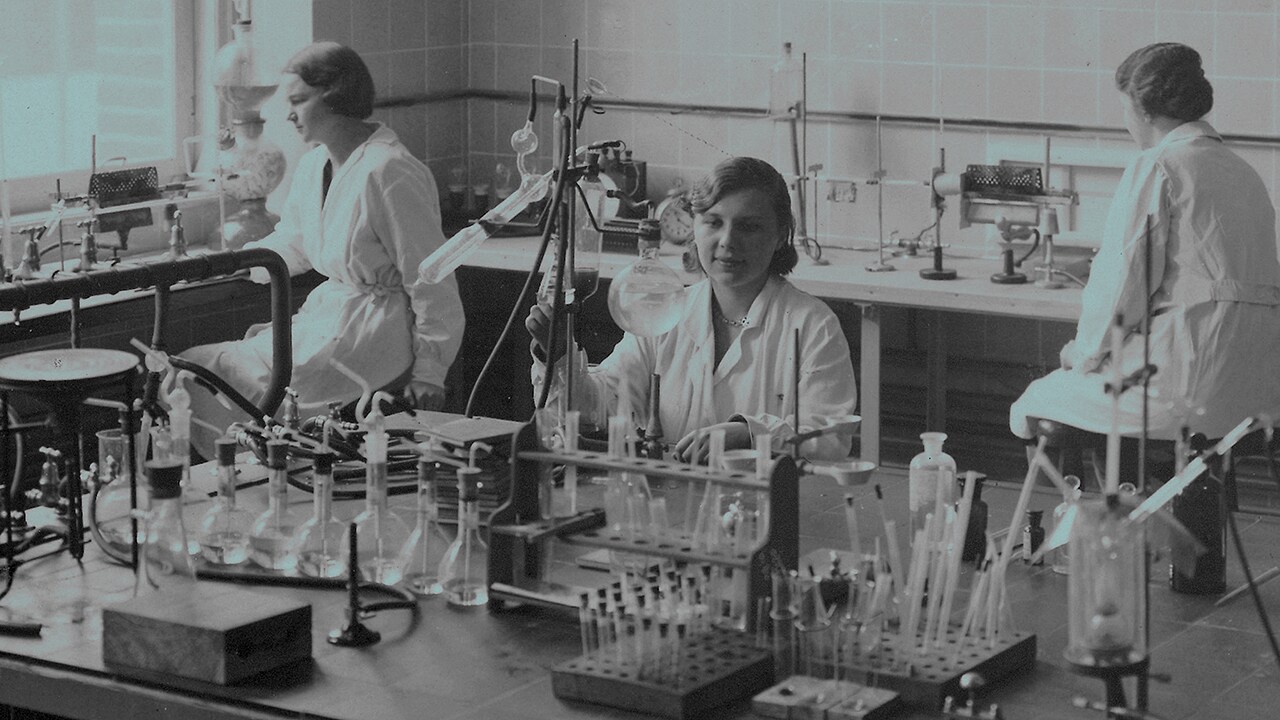
»We can only achieve equal opportunity at Merck [Darmstadt, Germany] by ensuring that we do not marginalize anyone. Consequently, across Merck [Darmstadt, Germany], we do not tolerate discrimination against anyone...«
Merck KGaA, Darmstadt, Germany, Code of Conduct, 2017
The first documents proving the employment of women at the company date back to the 1880s. In 1897, around 70 female packers and dispatch clerks from the shipping departments are collectively moved to the »women’s offices«, located in the buildings on Rheinstrasse. In 1909, women make up 17% of the workforce.
As crisis looms, the situation changes but this is only temporary. When the male workers are called up for military service, women take on an important role in the labor force, especially in production. At the end of the war, the returning men take up the »female jobs« again.
The economic miracle leads to continuous growth, however in order to sustain it, workers from abroad are urgently needed. In 1975, around 35% of foreign employees are women, the majority of whom come from Italy.
Statistics from 1968 clearly show the significant wage differences between men and women, who often work in lower paid occupations than men. Among non-exempt employees, too, women are assigned to lower pay groups.
At this time, social upheaval call the traditional roles of men and women into question. Economic injustice as a result of the hierarchical gender structure becomes part of public discourse.
At the company, women increasingly occupy managerial positions, both in Germany and abroad. In 1970, Teresa Franceschini is appointed Head of Accounting at Química Argentina. Within the sales departments, individual female pharmacists are granted commercial power of representation. The difficulty lies in the salesforce, where it is feared that women will »turn the heads« of the physicians. In the 1980s, the term »women’s quota« is coined and becomes a tool for human resources policy. Today, more than one in four supervisors is female.
In 2001, in response to pressure from policy makers, German companies voluntarily agree to increase the proportion of women in management positions. Nine years later, the results of this commitment fall significantly short of expectations – and social pressure for a statutory regulation increases. At the end of 2011, the German parliament calls for a quota of at least 30% of women on supervisory boards, which enters into force on January 1, 2016 in the form of the »Law on Equal Participation of Women and Men in Leadership Positions«. A year earlier, Merck KGaA, Darmstadt, Germany, signs the Equal Opportunity Charter with the aim of increasing female leadership within the company.
At the end of 2019, women occupy 33% of leadership roles Group-wide. Merck KGaA, Darmstadt, Germany, thus again exceeds its target of maintaining a 30% representation of women in these positions by 2021.
In the first half of the 20th century, women are mostly given »typical female jobs« in offices or canteens, but also tasks that require a high degree of dexterity and concentration. These include the packing of pharmaceuticals and chemicals.
In the early 1970s, the image of the female secretary is common place. However, company structures are beginning to open up as women find jobs in laboratories, administration and, increasingly, in executive positions. This development can also be seen internationally.
With the adoption of the Equal Opportunity Charter in 2015, women are now represented across all hierarchical levels, businesses and occupations. Despite this, women continue to be underrepresented in leadership positions. In 2019, the ratio of female to male employees its 43% to 57% worldwide.

